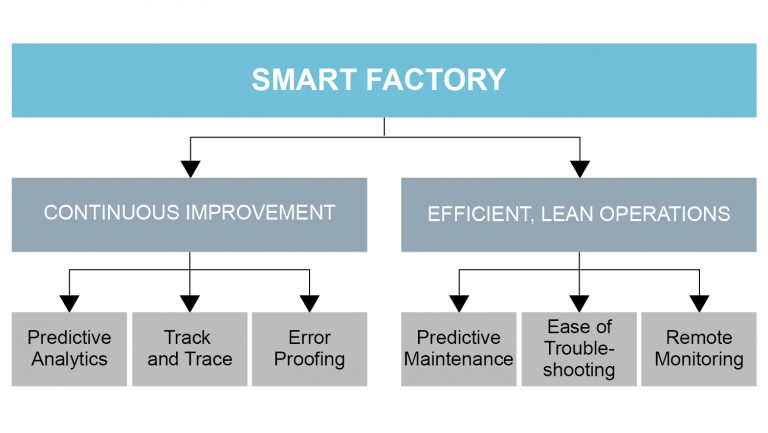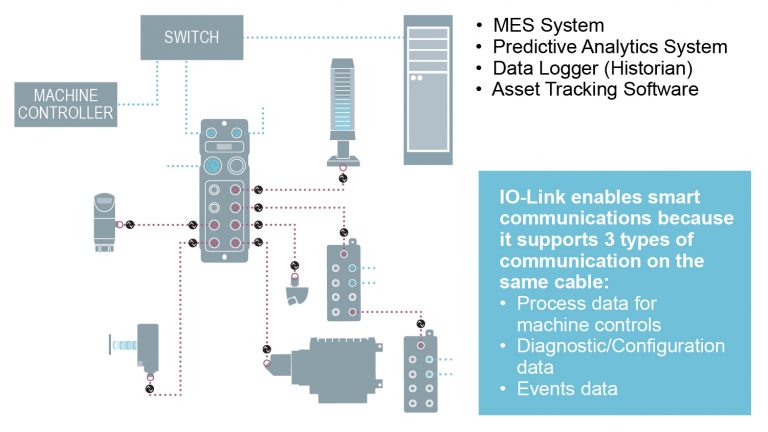As technology advances at a faster pace and the world becomes flatter, manufacturing operations are generally focused on efficient production to maximize profitability for the organization. In the new era of industrial automation and smart manufacturing, organizations are turning to data generated on their plant floors to make sound decisions about production and process improvements.
Smart manufacturing improvements can be divided roughly into six different segments: Predictive Analytics, Track and Trace, Error Proofing, Predictive Maintenance, Ease of Troubleshooting, and Remote Monitoring.

To implement any or all of these improvements requires interoperable systems that can communicate effectively and sensors and devices with the ability to provide the data required to achieve the manufacturer’s goals. For example, if the goal is to have error free change-overs between production cycles, then feedback systems that include identification of change parts, measurements for machine alignment changes, or even point of use indication for operators may be required. Similarly, to implement predictive maintenance, systems require devices that provide alerts or information about their health or overall system health.
Traditional control system integration methods that rely heavily on discrete or analog (or both) modes of communication are limited to specific operations. For example, a 4-20mA measurement device would only communicate a signal between 4-20mA. When it goes beyond those limits there is a failure in communication, in the device or in the system. Identifying that failure requires manual intervention for debugging the problem and wastes precious time on the manufacturing floor.
The question then becomes, why not utilize only sensors and devices with networking ability such as a fieldbus node? This could solve the data and interoperability problems, but it isn’t an ideal solution:
- Most fieldbuses do not integrate power and hence require devices to have separate power drops making the devices bulkier.
- Multiple fieldbuses in the plant on different machines requires the devices to support multiple fieldbus/network protocols. This can be cost prohibitive, otherwise the manufacturer will need to stock all varieties of the same sensor.
- Several of the commonly used fieldbuses have limitations on the number nodes you can add — in general 256 nodes is capacity for a subnet. Additional nodes requires new expensive switches and other hardware.

IO-Link provides one standard device level communication that is smart in nature and network independent, thus it enables interoperability throughout the controls pyramid making it the most suitable choice for smart manufacturing.
























